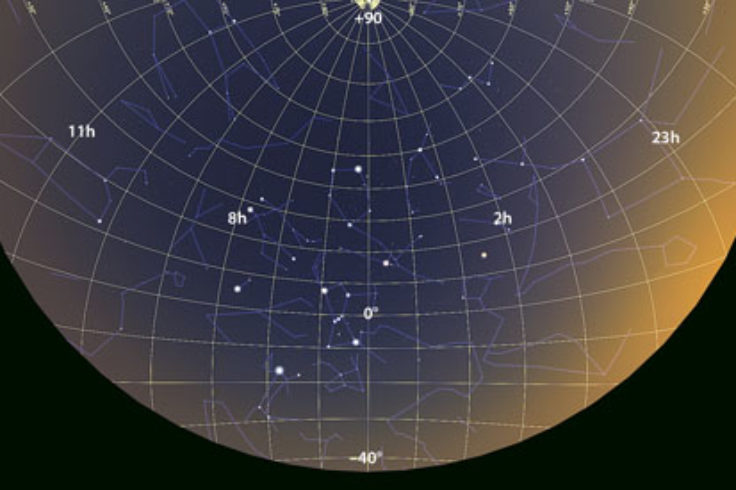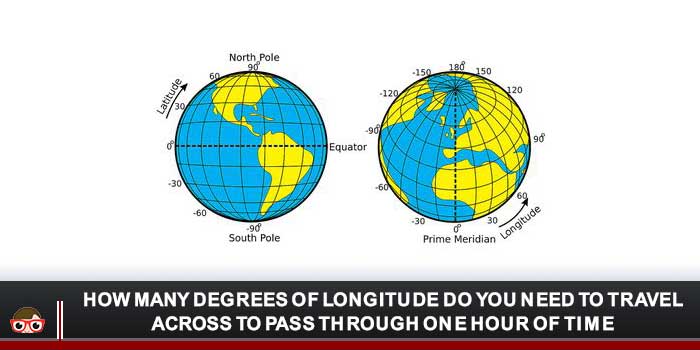To pass through one hour of time, you need to travel about 15 degrees of longitude. This is because there are 24 hours in a day and 360 degrees in a circle. So, 360 degrees divided by 24 hours equals 15 degrees per hour.
How many degrees of longitude do you need to travel across to pass through one hour of time? The answer may surprise you!
To put it simply, one degree of longitude is equal to four minutes of time.
So, if you were to travel east or west by one degree, you would technically be moving through time at the rate of four minutes per degree.
Of course, this isn’t something that we can actually experience since the Earth is round and we can only move in a straight line for so long before we end up back where we started. However, it’s still interesting to think about what would happen if we could somehow travel along a perfect circle around the globe.
If we could do that, then we would theoretically be able to experience an entire day in just 24 hours! Of course, there are other factors involved such as daylight savings time and the fact that the Earth’s rotation isn’t perfectly constant (it actually slows down ever so slightly over time), but if everything lined up perfectly then it would be possible.
In reality though, most of us will never get the chance to experience this kind of thing since it’s simply not possible with our current technology.
So I guess we’ll just have to content ourselves with travelling as fast as we can and hope that someday someone figures out how to bend space-time so that we can all experience time at different rates!

Credit: skyandtelescope.org
How Long Would It Take to Cross 1 Degree of Longitude?
A degree of longitude is about 69 miles, so it would take about 69 miles divided by your walking speed to cross one degree of longitude. For example, if you walk 3 mph, it would take 23 hours to cross one degree of longitude.
How Many Hours is in 1 Degree of Latitude?
There are 60 minutes in 1 degree of latitude. There are 24 hours in a day. Therefore, there are 24*60/360 = 4 minutes in 1 degree of latitude.
How Many Longitudes Does the Sun Passes Through in 1 Hour?
There are 360 degrees in a circle and the sun moves at a rate of 15 degrees per hour. This means that in one hour, the sun passes through 24 longitudes.
What Distance Does 1 Degree of Longitude?
1 degree of longitude is equal to 60 nautical miles, or 111.12 kilometers.
How To Calculate Duration Across Time Zones
How Many Time Zones are There
There are 24 time zones in the world. The reason for this is that the earth is divided into 24 sections, each representing one hour of time. The number of time zones has increased over the years as new countries have been added and old ones have been split up.
For example, when Russia was a single country, it had just two time zones. But now that it’s been divided into several smaller countries, there are 11 time zones in total.
The international date line runs through the Pacific Ocean and roughly follows a 180-degree line of longitude.
This means that on one side of the line, it’s midnight while on the other side, it’s noon. So if you were to travel westward around the world, you would gain an hour for every 15 degrees of longitude you crossed (assuming you didn’t cross any time zone boundaries). Conversely, if you were to travel eastward, you would lose an hour for every 15 degrees of longitude crossed.
The largest country in terms of landmass, Russia spans 11 different time zones. China also spans several different ones due to its large size. In fact, China has more people living within its borders than any other country – over 1 billion!
– so it makes sense that they would need more than one time zone to keep everyone on schedule.
Interestingly enough, there are a few places in the world where the localtime is offset by half an hour or even 45 minutes from neighboring areas. These “half-hour offsets” occur because some countries adopt daylight saving time (DST) while others do not.
Conclusion
How Many Degrees of Longitude Do You Need to Travel Across to Pass Through One Hour of Time: The Earth is divided into 360 degrees of longitude (180 degrees east and 180 degrees west), which helps us measure distance both east-west and west-east around the globe. But how many degrees of longitude does it take to travel one hour east or west? It turns out, it depends on where you start from.
The reason has to do with the fact that the Earth is a sphere, and as such, its circumference (the distance around the middle) is about 40,075 kilometers. This means that each degree of longitude represents about 111 kilometers (40,075/360). But because the Earth rotates on an axis from north to south, not every point on the surface travels at the same speed.
In fact, points near the equator travel much faster than points near the poles.
At the equator, in fact, a point moves about 1,037 miles per hour (1,674 kilometers per hour). That’s why it takes less time to fly from Quito, Ecuador to Bogotá, Colombia than it does to fly from New York City to London – even though they are roughly the same distance apart!
By contrast, a point at 60 degrees north latitude only moves about 463 miles per hour (745 kilometers per hour). So if you were standing at that latitude and started walking due eastward (or westward), it would take you just over two hours to walk one degree of longitude.


